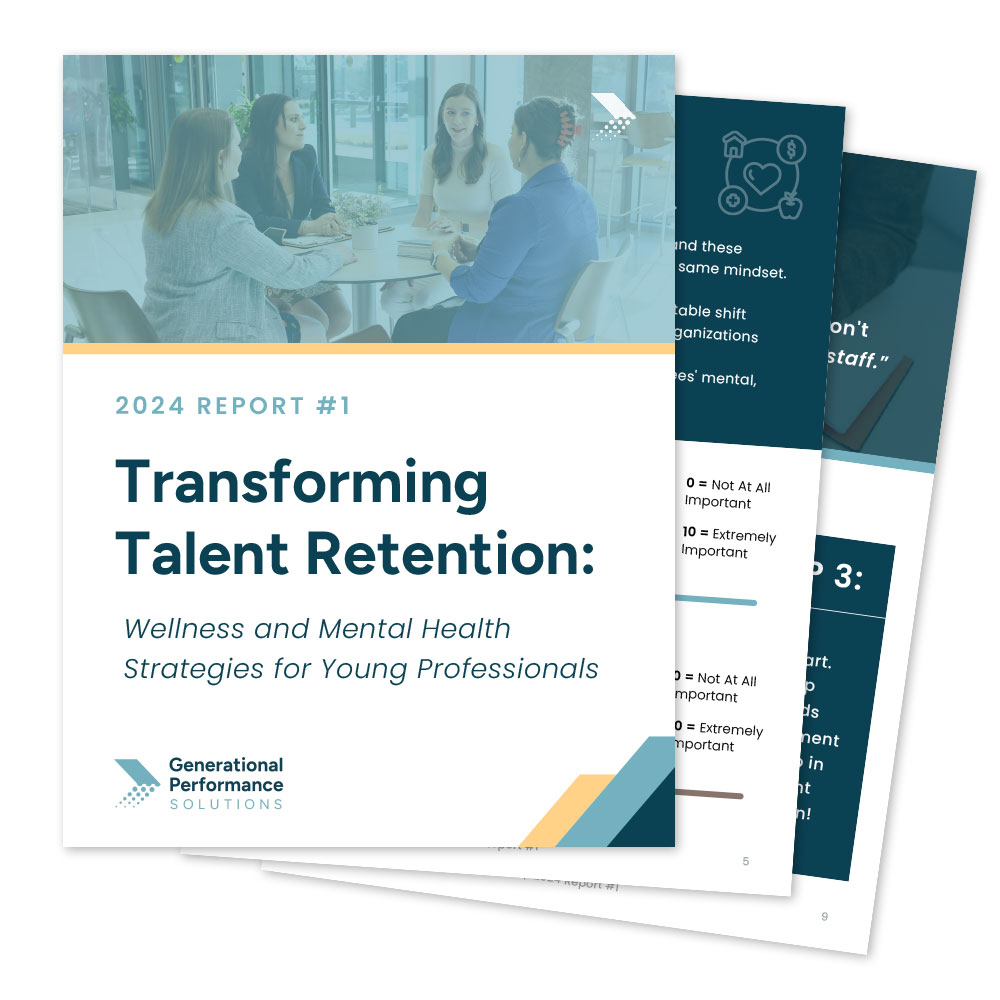We’ve been thinking a lot lately about a problem that isn’t really new: the persistent feedback from business leaders that young talent struggles to communicate in the workplace. While the headlines about Gen Z’s lack of professionalism have been hitting a boiling point lately, the general experience of a communication skills gap is one that has been reported on for years now. For example, SHRM wrote about the lack of soft skills and communication training in young talent back in 2019—and if your immediate thought is, “And that was before global pandemic sent everyone home for 18 months of virtual learning…” then you’re thinking the same thing we are.
SHRM offers a few reasons for young professionals’ inability to communicate effectively, less required liberal arts courses and young people’s retreat into the digital realm being the two most prominent. However, we’re now in 2025, and the reasons why the skills gap exists feel almost fruitless to dissect at this point. What’s not a waste of time, though, is strong consideration of what your business stands to lose if the problem is left unexamined. Even in 2019, over half of business leaders were finding it difficult to find qualified applicants who also had strong communication or interpersonal skills. The article even notes that soft skills are becoming more important as digitization of hard skills increases—and if your immediate thought is, “And that was before the invention of AI…” then once again, you’re thinking the same thing we are.
What’s easy to do in this situation? Bemoan the problem’s existence and finger-wag at academic institutions for their failure to give us our ideal, well-rounded candidates. (And hey, this isn’t always an unproductive method. Sometimes the squeaky wheel gets the grease!). However, we all know that a ship as large as academia isn’t going to turn its rudder quickly, so while it might make us feel better to vent, that’s probably all it will do.
What’s more difficult to do? You probably already know the answer to this one: be a part of the solution. No, you can’t solve a defining feature of a generation—but you can recognize that most young professionals may actually be receptive to their workplaces teaching them new skills, and you can meet them where they are. It may not sound fun to add training to your onboarding and professional development that once felt like the job of educators, but if you want to future-proof your workforce, it just might be your best option.
Tips for Bridging the Communication Skills Gap
With all of this talk about a critical lack of skills in younger professionals, this topic can feel like a bit of a downer. However, the good news is this: you’re not alone. Not only are countless other business professionals dealing with the exact same issue, but we’ve gained a wealth of knowledge from our research, and we’re here to guide you through the uncharted waters of teaching communication to your younger team members. We’ve put together a list of starting points as you consider how you can integrate communication training into your team’s professional development.
- Communication is generational. Yes, we know this is an unsurprising thing for us to say. But hear us out: just like there are norms, experiences, and perspectives that bind your generation together, Gen Z has these as well. In fact, just ask them to tell you the nuanced meanings of a few different emojis, and you’ll quickly learn that they have quite complex communication norms. As with most generational differences, starting from a place of curiosity (rather than condemnation) is key.
- Focus on mentorship—not authority. Instead of viewing this skills gap as one that needs a firm hand, find a way to implement a mentor or coach-style relationship with gentle guidance. Approaching communication from an “I’m right, you’re wrong” perspective will probably result in greater generational divides rather than productive upskilling. However, giving new hires a mentor who postures themselves as a guide for navigating the corporate world can empower young talent to ask for help in situations that require strong interpersonal communication skills.
- Create systems that work. When we asked survey participants if they had a mentor in 2024, over 60% (on both LinkedIn and Instagram) responded with “No, but I wish I did.” It’s clear that professionals are craving one-on-one guidance in their careers, so if you do implement a mentor/mentee system, make sure you do so intentionally. It’s not enough to assign a mentor and walk away—instead, create a system that requires regular check-ins and opportunities to build trust. After a while, a strong mentor/mentee relationship will function organically, but business leaders should recognize their responsibility to get the ball rolling.
- Don’t forget to ask for feedback. Not only is it important that you receive feedback about the professional development and mentorship opportunities you’re providing, but it’s also vital that you simply ask young professionals what communication skills they wish they had. In most cases, they’ll be able to identify moments in their career where they felt ill-equipped to handle a situation correctly, and they’ll tell you about it. These kinds of conversations can work wonders to bridge gaps—not only communication gaps, but generational ones.
Ultimately, the ball is in your court to build the professionals you want to see on your own team. While this can feel intimidating, consider it an advantage, as you can tailor your team’s soft skills based on the ones they’ll need the most within your industry. Not to mention that every once in a while, the self-awareness of younger generations could take you by surprise, and they might even teach you something about how to improve your own communication at work.
If you want more information about the priorities most valued by today’s top talent, download our 2024 Report!
Did you like this week’s post? Then you might like these posts below.
An Updated Conversation on Hybrid and Return to Work
Transforming Talent Retention: The Benefits and Wellness Report
How to Get Your Team to Show Up to Work on Time
What’s Next?
If your team is navigating generational friction, stalled performance, or culture misalignment—it’s time to take action.
At GPS, we help organizations unlock clarity, communication, and performance across every generation. And we don’t just talk about results—we deliver them in 90 days or less.
🎯 Let’s build a workplace that works for everyone.
Schedule your Free Planning Session today and start driving results that last.

